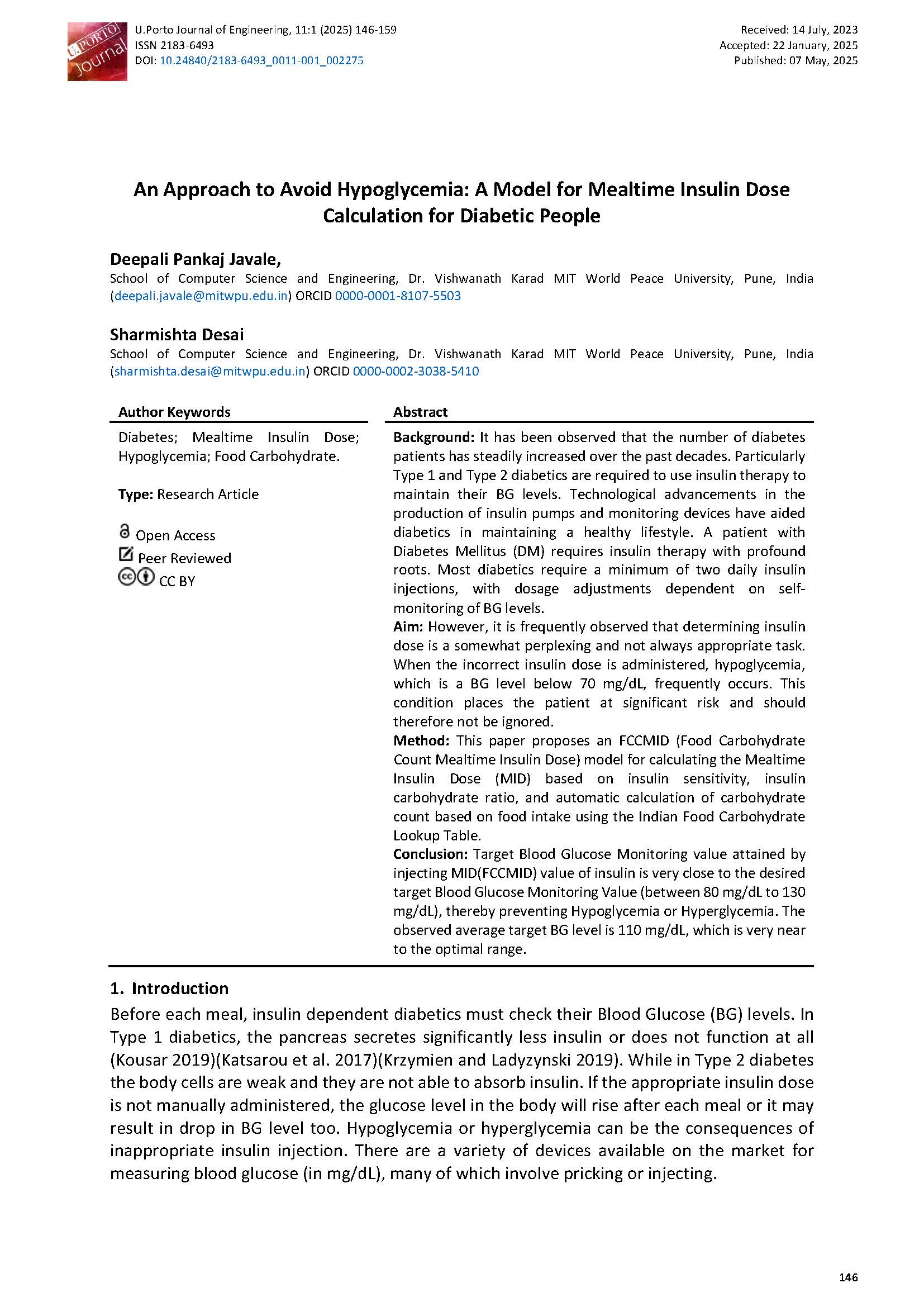An Approach to Avoid Hypoglycemia: A Model for Mealtime Insulin Dose Calculation for Diabetic People
Main Article Content
Abstract
Background: It has been observed that the number of diabetes patients has steadily increased over the past decades. Particularly, Type 1 diabetics are required to use insulin therapy to maintain their blood glucose levels. Technological advancements in the production of insulin pumps and monitoring devices have aided diabetics in maintaining a healthy lifestyle. A patient with type 1 Diabetes Mellitus (DM) requires insulin therapy with profound roots. Most diabetics require a minimum of two daily insulin injections, with dosage adjustments dependent on self-monitoring of blood glucose levels.
Aim: However, it is frequently observed that determining insulin dose is a somewhat perplexing and not always appropriate task. When the incorrect insulin dose is administered, hypoglycemia, which is a blood glucose level below 60 mg/dL, frequently occurs. This condition places the patient at significant risk and should therefore not be ignored.
Method: This paper proposes an FCCMID (Food Carbohydrate Count Mealtime Insulin Dose) model for calculating the Mealtime Insulin Dose (MID) based on insulin sensitivity, insulin carbohydrate ratio, and automatic calculation of carbohydrate count based on food intake using the Indian Food Carbohydrate Lookup Table.
Conclusion: Target Blood Glucose Monitoring value attained by injecting MID (FCCMID) value of insulin is very close to the desired target Blood Glucose Monitoring Value (assumed to be 100 mg/l), thereby preventing Hypoglycemia. The observed average target blood glucose level is 110 mg/l, which is very near to the optimal 100 mg/l value.
Downloads
Article Details

This work is licensed under a Creative Commons Attribution 4.0 International License.
Authors who publish with this journal agree to the following terms:
- Authors retain copyright and grant the journal right of first publication with the work simultaneously licensed under a Creative Commons Attribution License that allows others to share the work with an acknowledgement of the work's authorship and initial publication in this journal.
- Authors grant the journal the rights to provide the article in all forms and media so the article can be used on the latest technology even after publication and ensure its long-term preservation.
- Authors are able to enter into separate, additional contractual arrangements for the non-exclusive distribution of the journal's published version of the work (e.g., post it to an institutional repository or publish it in a book), with an acknowledgement of its initial publication in this journal.
- Authors are permitted and encouraged to post their work online (e.g., in institutional repositories or on their website) prior to and during the submission process, as it can lead to productive exchanges, as well as earlier and greater citation of published work (See The Effect of Open Access).

